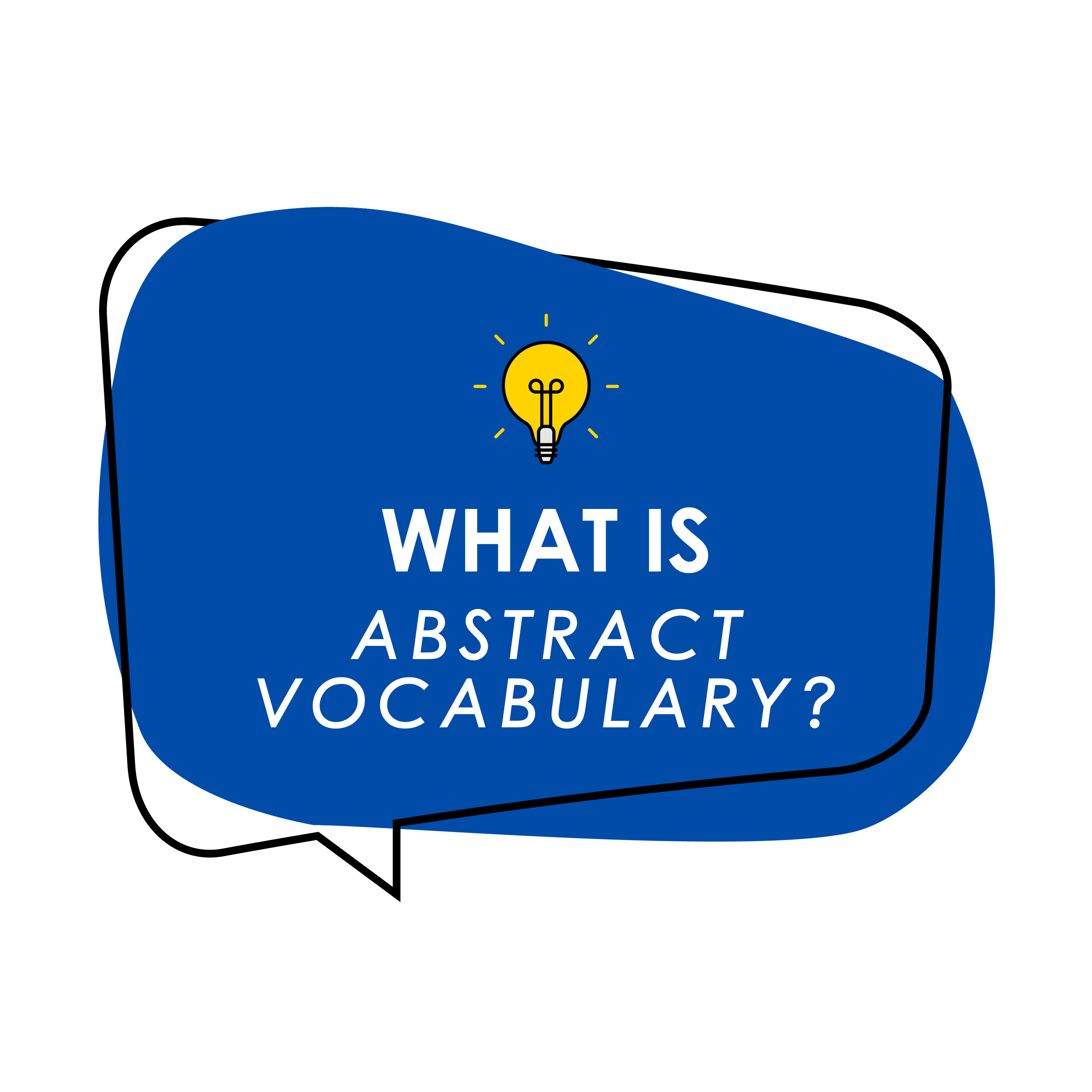

Abstract Vocabulary Instruction:
If a Picture Is Worth a Thousand Words, How about Six?
Decades of research have identified multiple variables that have an impact on how hard or easy it is to learn and remember vocabulary words. Some of these factors include:
1) the length of the word (longer words often have more complex spelling)
2) the frequency of the word in the language (i.e., how often it is used in speech or in print)
3) the degree of abstractness of the word (e.g., “theory” vs. “car”)
Solving Vocabulary Learning Challenges
Teachers Are Not Alone.
For the last 50 years, academics have debated and discussed why they think abstract vocabulary is so much harder to learn, and exactly what our brains do to learn them. Concrete words like “kitten” tend to be quickly learned when the spoken word is paired with the physical perception of the kitten.
For example, from petting one, hearing it meow, or even just seeing one on TV or in a picture. Words like “freedom,” however, don’t have direct physical referents, so how do we learn them?
What Is Dual Coding Theory?
Dual Coding Theory, put forth by Alan Paivio in the 1970s, and elaborated upon by Mark Sadoski, is the theory that explains why we learn and store information best when language is paired with nonverbal information like visuals, sounds, tactile information, etc. For decades, though, the pressure was on to prove that abstract words could also be learned in this manner.
What single picture or experience could pair with the word “prominent,” for example? A frequent comment has been, you can’t teach an abstract word with a concrete picture. Teachers everywhere have seen the result when they try; students anchor the abstract idea of “prominent” onto a single picture of one example of prominence (e.g., something being taller than the surrounding structures) and a week later, the student is convinced that “prominent” simply means tall.
What Is Semantic Reasoning?
In a recently published article by Mark Sadoski and our own Beth Lawrence, InferCabulary is highlighted as one such method that answers this decades-long question. The answer is, you can’t anchor an abstract idea with a single picture, but you can with six! Semantic Reasoning, the “secret sauce” in InferCabulary, drew Dr. Sadoski out of retirement to co-author this paper and engage in research on its effectiveness.

In Abstract Vocabulary Development: Embodied Theory and Practice, published in Educational Psychology Review, a top education journal, the case is made that oral language paired with multiple simultaneously presented visuals allows abstract words to be quickly and efficiently learned. Semantic reasoning for vocabulary learning has its theoretical underpinnings in Dual Coding Theory and supports the growing field of Embodied Cognition.

See It in action!
✔ Explore InferCabulary!
✔ Attend a free 3-hour Science of Reading Vocabulary Workshop!
✔ Read more about the Top 8 Vocabulary Instruction Best Practices
Are you looking for a Science of Reading curriculum solution? Don't make a decision without looking at our exceptional, efficient, and scientifically aligned approach used in our reading programs. We have been teaching the Science of Reading for 18 years. Whether it be our professional development, diagnostics, student grouping, reading interventions, and whole class reading instruction, everything we offer is firmly and deeply rooted in the Science of Reading.


